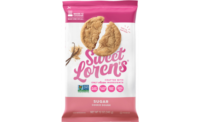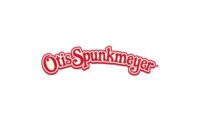Racin’ in the Dough
By Deborah Cassell
The next time you feel compelled to drink a Coke, send a package via Fed Ex or eat at Applebee’s, ask yourself if the last movie you saw had any influence on those urges.
Chances are it did, whether you realize it or not. The average theater buff doesn’t shell out $10 for a ticket, $3.50 for a soda, $5 for popcorn and $3 for candy in hopes of seeing brand names such as Nike, Pepsi, Ray-Ban, America Online and other familiar advertisers tout their products on the big screen for two to three hours. But these days, product placement goes hand-in-hand with Hollywood, where it’s become as commonplace as plastic surgery, celebrity breakups and the ever-present paparazzi.
Sometimes subtle and often overt, the appearance of everything from Old Spice (yes, Old Spice) to Dr. Pepper in big- (and low-) budget flicks now is the norm. And the food, beverage and candy industries are key drivers in this marketing vehicle.
Some scripts take a tongue-in-cheek approach, promoting products so shamelessly that you know they must be joking … right?
Case in point: In the motion picture release “Talladega Nights: The Ballad of Ricky Bobby,” “Saturday Night Live” alum Will Ferrell plays a NASCAR driver (Ricky Bobby) whose car is sponsored by Wonder bread. But that’s just one of a flurry of product placements in this hilarious flick, which brilliantly parodies the corporate sponsorship-driven world of NASCAR. Brands ranging from Perrier to Food Lion rev up the racetrack in “Talladega Nights.” Not only are audiences subjected to branded billboards and race cars, but dialogue throughout the movie supports certain sponsors, as well.
For example, while saying grace during a family gathering, Bobby presides over a Country Crock and Coca-Cola-laden table and gives thanks Domino’s, KFC and Taco Bell. (Note that Bobby also is under contract to praise PowerAde’s new “Mystic Mountain Blueberry” flavor at every meal.)
When the family decides to go out for a nice dinner, they hit Applebee’s.
After Bobby loses his Wonder bread sponsorship, he sells his windshield to Fig Newtons. (“This sticker is dangerous and inconvenient, but I do love Fig Newtons!”)
And in a climactic scene during which Bobby’s car takes a serious tumble that sends its driver into a psychosomatic slump, one NASCAR commentator exclaims, “That Wonder bread car is toast!”
This is not Wonder bread’s first appearance on the big screen. The all-American white bread (now available in whole grain varieties) has made cameos in many movies. But “Talladega Nights” is Wonder’s first leading role. The movie also marks “a marriage of two all-American brands: Wonder and NASCAR,” says Stan Osman, vice president of marketing for Interstate Bakeries, maker of Wonder bread.
“We’re always looking for new opportunities to connect our products, many of which are iconic brands, with consumers,” Osman continues, adding that Will Ferrell is said to be a “big fan” of the white bread.
Although Ferrell’s past box office performances have been hit or miss, “Talladega Nights” is a blockbuster that’s sure to drive bread aisle sales across America … Remember that when you find yourself dropping a loaf in your shopping cart this summer.
Making the Brand
Sometimes, movies actually inspire the creation of real products. For example, Bubba Gump Shrimp Co. is named for Forrest Gump and his army bud Bubba, whose conversational skills were limited to one subject (“ … shrimp is the fruit of the sea. You can barbecue it, boil it, broil it, bake it, sauté it. There’s, uh, shrimp kabobs, shrimp creole … shrimp gumbo, pan-fried, deep-fried, stir-fried. There’s pineapple shrimp, lemon shrimp, coconut shrimp, pepper shrimp … shrimp soup, shrimp stew, shrimp salad, shrimp and potatoes, shrimp burger, shrimp sandwich … and that’s about it.”)
In addition, Willy Wonka Candy Factory — the brains behind Nerds, Bottle Caps, the Everlasting Gobstopper and Laffy Taffy — did not yet exist when audiences first saw “Willy Wonka & The Chocolate Factory” back in 1971.
Talk about products imitating placement.
Oscar-Worthy Product Performances
“E.T.” — A wrinkly yet loveable alien has a penchant for Reese’s Pieces.
“Wayne’s World” — Wayne and his comedic sidekick poke fun at product placement while plugging the likes of Doritos, Pepsi and others. (“Contract or no, I will not bow to any sponsor,” says a straight-faced Garth, while holding a Pizza Hut box.)
“Sideways” — Pinot noir sales got a nationwide boost from this Oscar-nominated flick.
“Harold & Kumar Go to White Castle” — Need I say more?
“American Pie” — It’s questionable whether pie bakers benefited from this film, but I would be remiss not to mention it here.
“Forrest Gump” — Tom Hanks’ character uses a White House restroom after drinking too many Dr. Peppers.
“Napolean Dynamite” — The main character in this quirky indie hit so loves school cafeteria-issued Tater Tots that he hoards them in his pockets.
“Mean Girls” — “I don’t think my father, the inventor of Toaster Strudel, would be too pleased to hear about this,” says “Plastics” clique member Gretchen Wieners, while facing punishment in the principal’s office.
“Super-Size Me” — Documentary filmmaker Morgan Spurlock eats nothing but meals from fast food giant McDonald’s for 30 days in a disgusting illustration of why Americans are so obese. (Despite Spurlock’s message, Americans continue to frequent the Golden Arches for McEverything.)
“Ghostbusters” — The Stay Puff Marshmallow Man storms New York City … King Kong-style.
“Regarding Henry” — An amnesia-stunned Harrison Ford paints portraits of Ritz crackers (which his mushed-up mind has confused with the Ritz-Carlton Hotel) during the road to recovery.
“Austin Powers: The Spy Who Shagged Me” — In this sequel to “Austin Powers: International Man of Mystery,” Dr. Evil discovers that his company, Evil Enterprises, has invested in the equally evil Starbucks empire.
“The Coca-Cola Kid” — An American marketing executive (played by Eric Roberts) tries to sell a resistant region of Australia on the merits of the ice-cold soft drink. Note: According to the Internet Movie Database, www.imdb.com, “The film was produced without the knowledge or consent of the international offices of the Coca-Cola Co. However, since both the company and its product were depicted so favorably in the film (as well as the film being free advertising), they took no legal action against the parties involved.”
Eat Hot to Be Hot
Not only do spices contribute to the flavor and aroma of snacks and baked goods, but they also may help us lose weight. According to researchers from Maastrich University’s Wageningen Centre of Food Science in Holland and Lavale University in Quebec, seasonings such as capsaicin, black pepper, ginger and mixed spices contribute to energy balance and heat generation (thermogenesis). For instance, the compound that gives red chili pepper its heat might help people burn more energy. Case in point: Consumers who drink tomato juice with a little bit of red pepper added might experience reductions in the amount of energy consumed from meals by 10%. Additionally, black pepper can stimulate the metabolism through piperine, a component that can bind Transcient Receptor Potential Vanilloid (TRPV1) receptors in the brain and other parts of the nervous system. Ginger also activates TRPV1 and has thermogenic properties.
Nutty Studies
In their efforts to eat more healthful products, Americans today often turn to foods that are rich in antioxidants, which deactivate free radicals — cell-destroying compounds in the body that can cause heart disease, cancer and strokes. Good news: Researchers from the Jean Mayer USDA Human Nutrition Research Center on Aging at Tufts University found that a serving of almonds contains a comparable amount of antixodants called flavonoids as a serving of broccoli or a cup of brewed back or green tea. The findings recently were published in the Journal of Agriculture and Food Chemistry. A 1-oz., 160-calorie handful of almonds also is an excellent source of Vitamin E and protein, a good source of protein and fiber, and offers heart-healthy monosaturated fat, potassium, calcium, phosphorous and iron.
In a related study, primary care doctors in 10 teaching hospitals across Spain discovered that those who follow a “Mediterranean diet” that includes vegetables, legumes, olive oil or nuts — especially walnuts — may reduce the risks of heart attack and cardiovascular disease by up to one-half. The diet is said to lower blood pressure, improve lipid profiles, decrease insulin resistance and reduce concentrations of inflammatory molecules. “Effects of a Mediterranean-Style Diet on Cardiovascular Risk Factors” appeared in the Annals of Internal Medicine in July. For more information, visit www.predimed.org.
Habitual Learning
Here’s yet another reason why snack and bakery food producers should target moms as their core consumers. Children begin forming eating habits and food preferences while they’re still in the womb, according to research by the Monell Chemical Senses Center, the National Institutes of Health and Sam Houston State University. The study, shared at the Institute of Food Technologists Annual Meeting and Food Expo in June, suggested that a mother’s eating habits during pregnancy and breast feeding have a strong influence on children’s acceptance of healthy foods. In addition, an infant’s reactions to food are similar to an adult’s, and repeated exposure leads to greater acceptance. Also, heredity and a child’s exposure to family customs have a major impact on their eating habits and taste cravings as an adult. For additional health studies, visit www.ift.org.




